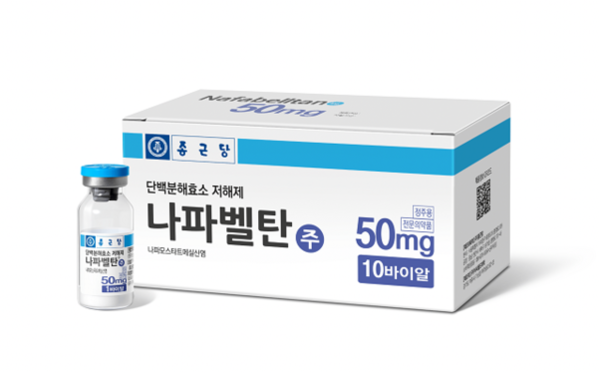Input 2021.03.09 10:48
Easier to respond to mutations than antibody treatments
Deciding whether to grant permission in the middle of next month

According to the Ministry of Food and Drug Safety on the 9th, Chong Kun Dang applied for conditional permission by submitting the results of phase 2 clinical trials of Napa Beltan the previous day. The Ministry of Food and Drug Safety will decide whether or not to approve approval in the middle of next month after reviewing including expert advice for 40 days.
Chong Kun Dang said, “We have confirmed the severe treatment effect of Napa Beltan on Corona 19 through clinical trials.” Antibody treatments have been approved for use in some mild and moderately ill patients, and if Napabeltan is licensed for use, treatment options to prevent death of severely ill patients will also arise.
Chong Kun Dang decided that clinical trials were difficult due to the small number of severely ill patients in Korea, and in August last year, in consultation with the government, it began phase 2 clinical trials in Russia. As a result of comparing the treatment effect of the napabeltan-treated group and the control group for 28 days in 104 severely ill patients, 94.4% of the treatment group recovered, showing a significant treatment effect compared to the control group (61.1%). The number of deaths during the clinical period was 0 in the napabeltan group, which was different from the control group (4 cases).
Chong Kun Dang also explained that “Napabeltan has an effect on the mutant virus that is spreading around the world in recent years.” Celltrion’s antibody treatment is in contrast to the development of a new treatment as it has been confirmed to be ineffective against mutant viruses originating in South Africa. Antibody therapy, which binds to the surface protrusions of the virus and eliminates infectivity and toxicity, has the potential to be incapacitated if the protrusion structure changes due to viral mutations. On the other hand, Napabeltan is a principle that inhibits the function of’TMPRSS2′, a substance in the body that viruses need for cell penetration, so the therapeutic effect is independent of mutation.
It is evaluated that the convenience of administration is inferior to that of antibody therapy. Both treatments are injections administered intravenously, but it is known that the single administration time is around 24 hours, which is longer than that of the antibody treatment (90 minutes). A Chong Kun Dang official said, “I don’t think this is a big problem because severely ill patients are hospitalized for a long time anyway.”
Napabeltan is a drug that was originally released as a treatment for pancreatitis. In May of last year, Pasteur Korea Research Institute of Korea conducted a’drug re-creation’ study to find the effect of treating COVID-19 from existing medicines. Journal (JMV)’. As a result of injecting Napamostat into the infected cells, it was found that the effect of reducing the viral activity was found even with an amount as much as 1/600 of remdesivir.
The Ministry of Food and Drug Safety has not yet confirmed the review schedule for Napa Beltan, but referring to Celltrion’s precedent, it is expected that the results will come out in the middle of next month after a triple advisory meeting with experts from the end of this month. In the case of Celltrion, the first consultation result came out on January 18, about three weeks after the application date (December 29 of last year), and the final approval was obtained on February 5, about three weeks later.
